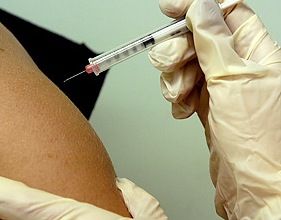Article
One Dose May Be Enough for HPV Vaccine
Author(s):
A study has shown that even a single HPV 16/18 vaccine dose induces an antibody response that was easily detected in all the vaccinated young women at the end of the four-year follow-up.

A single dose of Cervarix, GlaxoSmithKline’s human papillomavirus vaccine (HPV), was able to produce stable antibody levels against two strains of HPV (16 and 18) in young women when measured at 48 months, according to a study supported by the National Cancer Institute and published online in Cancer Prevention Research. The finding suggests that even a single dose of the vaccine may induce long-term protection.
The findings require further study, but the study is the first to show that even a single HPV 16/18 vaccine dose induces an antibody response that was easily detected in all the vaccinated young women at the end of the four-year follow-up.
The patients were participants in the Costa Rica Vaccine Trial, in which 7,466 women were randomized to receive the HPV vaccine or a hepatitis A vaccine. Each subject’s seropositivity was confirmed by ERISA analysis and HPV DNA was quantified by PCR testing.
Investigators measured HPV 16- and 18-specific antibody levels in four groups of patients: 78 who received one dose of vaccine, 140 who received two doses one month apart, 52 who received two doses six months apart, and 120 patients who received all three doses of the vaccine. Researchers also measured the antibody titers in 113 unvaccinated women who were HPV 16/18 seropositive from natural infection.
Almost all the patients were seropositive within one month of the first dose of vaccine; GMTs were not significantly different among the groups who were vaccinated. At four years 100% of the women in all groups remained HPV 16/18 seropositive; both HPV 16 and 18 GMTs among the extended two-dose groups were noninferior to the three-dose group, and ELISA titers were highly correlated with neutralization titers in all groups. Compared with the natural infection group, HPV 16/18 GMTs were at least 24 and 14 times higher among two-dose and nine and five times higher among one-dose vaccines.




